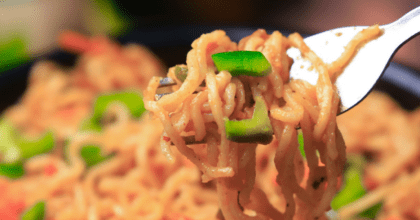29 million Americans have posted a food or drink picture at a restaurant
Chicago (June 3, 2014)—Check out any social media feed and it is likely dominated by a core group of consistent regulars: babies, weddings, pets and food. New Mintel research shows that posting food pics has gone beyond a few fringe foodies and is infiltrating the mainstream: 13% of those who have dined out in the past month and use social media have posted a food or drink picture to social media, which equates to approximately 29.2 million hungry amateur food photographers. To put that into context, consider that 14% of networkers said they posted on social media about any purchase, and only 39% of social media users report posting their own updates at least a few times a week.
Even without photographic evidence of their epic meal or late night snack, consumers are still engaging with restaurants to the tune of 14% having posted a positive comment on a brand’s social media page. Perhaps those percentages would be higher if people’s phones hadn’t died: 28% indicate they would stay longer at restaurants if charging stations for electronic devices were available for their phones. In the end, despite all the rave reviews you might read on the next big hot spot, only 17% of respondents are influenced by a positive review to eat at a certain establishment.
So how do restaurants use all of this newfound technology to enhance the diners’ experience and establish customer loyalty in the always competitive and sometimes fickle world of dining out? Mintel research suggests that combining traditional loyalty programs with today’s technology may be the best bet. Respondents (69%) indicate they prefer loyalty programs that issue points toward future purchases. Yet despite a stated preference for loyalty programs, 42% say that loyalty programs that track ordering habits make them feel like they’re being watched.
“Brands must walk the fine line of providing enough value to customers in exchange for their information,” says Bethany Wall, foodservice analyst at Mintel. “Mobile apps and other technologies by operators and third parties have made it easier than ever for consumers to find information such as nutrition and locations, make reservations, order, pay, leave reviews and feedback, and participate in loyalty programs. In return for these conveniences, restaurants can use these apps to collect great amounts of information that can be mined in order to determine the best way to reach and communicate with consumers.”
Buy one get one free deals are still the most preferred type of deal (46%), followed by value meals/dollar menus (33%). Men are more swayed than women by free wi-fi (31% to 27%) and a big screen TV (20% to 15%), whereas women prefer loyalty cards (42% to 31%) and an at-table tablet to ask for food, refills and extra napkins (21% to 19%).
“Technology is playing an increasingly important role in the restaurant space,” continues Bethany. “With recent advances, restaurants can create a unique, fully customizable experience for consumers, as well as provide faster speed and improved convenience. The key is to be unique, responsive and creative and to provide a benefit that exceeds the hesitation of the customer. Getting them in the door is just first step, but keeping them coming back is the real key.”
-
Mintel StoreGet smart fast with our exclusive market research reports, delivering the latest data, innovation, trends and strategic recommendations....View reports
-
Mintel LeapMintel Leap is a revolutionary new AI-powered platform that will transform your research process....Book a demo







































